Last Updated on November 6, 2025 by Michelle
I’ve been growing herbs for tea for years.
SCROLL DOWN to see the 16 medicinal plants I just ordered (most from Territorial Seed Co.)
I was even nationally recognized for the fact that I grow a coffee substitute in my New England garden. Read the article & watch the video of me harvesting my chicory in my New England garden right here.
After making a few original tea blends that I love–like my tea that tastes like coffee that the national news outlet wrote about last fall and this Lipton knockoff–I figured out a recipe for making a delicious DIY soda too.
Huge bonus: I even grow some of the herbs and other ingredients I need for making these delicious drinks.
Can you grow your own herbs for tea?
Absolutely! There are so many herbs you can easily grow for making your own delicious, organic tea blends. I grow a large number of mints, lemon balm, tulsi basil, lavender, and rosemary. Herbs are so easy to grow, so easy to dry, and so easy to keep for years.
Mixing herbs, flowers, and other adaptogens in unique combinations to make my own tea blends is a delicious hobby that gets more fun every year as I grow more and more herbs for tea.
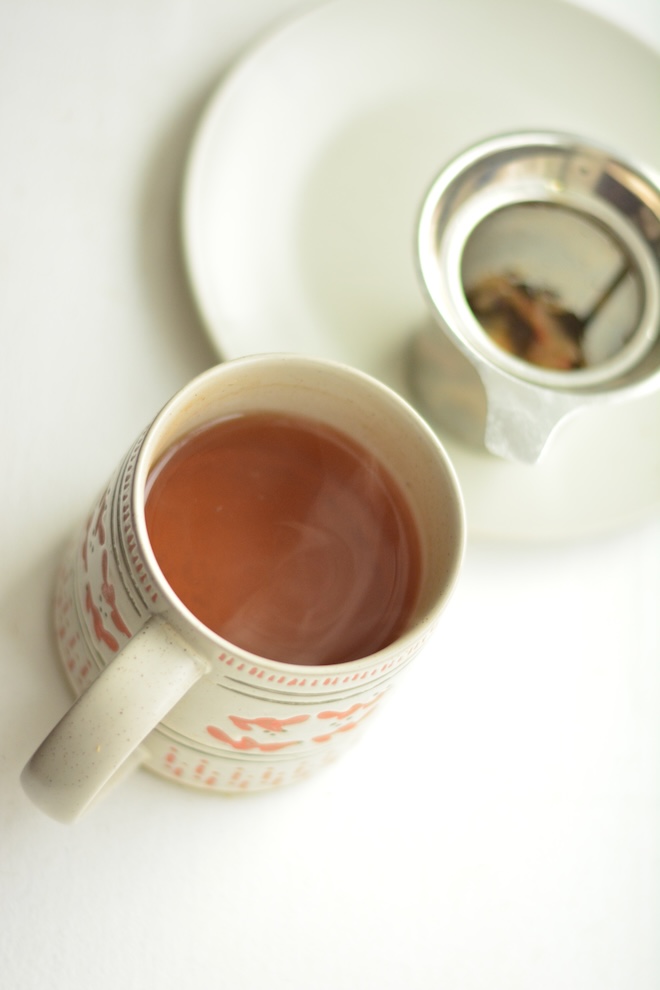
I’m writing this on a cold snowy Saturday in January and while summer seems far away, as I sit here in front of the warm fireplace with my seed packets strung out all over the carpet and my wish lists getting longer, out of nowhere the idea hit me…
I grow so much of my own food but why don’t I grow more of my own teas and other drinks?
First, of course, I thought of some more tea ingredients I would love to grow myself. I make a lot of homemade tea blends, and I currently grow a lot of mint, some ingredients for making our favorite flavors of kombucha, and chicory, for making tea that tastes like coffee. (This is the variety of chicory I grow to harvest the roots to make a coffee substitute.)
But sitting there cross-legged in front of the wood stove, with the (spoiled) barn cat and piles of seed packets around me, I realized I’d never once thought about trying to grow the ingredients for my DIY soda.
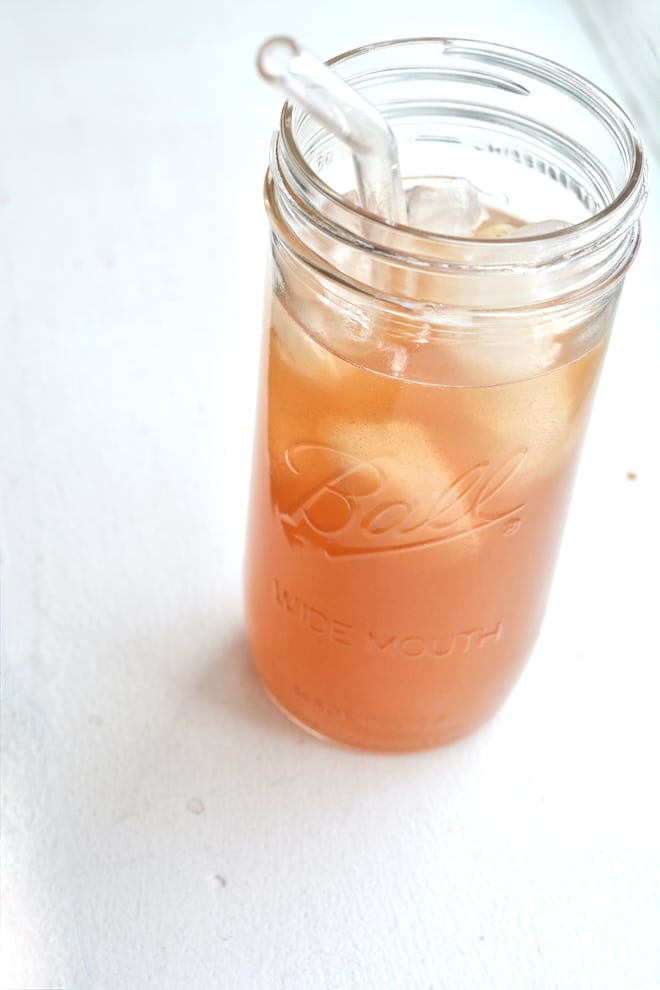
So I’m planning a garden of herbs for tea and soda.
I’m sure you know the old saying… If you learn how to make your own soda, you’re gonna want a garden to go with it… or, something like that…
So I pulled open my DIY Coke recipe to peruse the ingredient list:
- maple syrup
- lemon juice
- lavender
- anise (well, officially anise extract )
- ginger
- 1 TB vanilla extract
- vinegar
- cinnamon
- nutmeg
Those first two ingredients I already grow myself! We’ve been making our own maple syrup for a decade now, and I’ve had my beloved lemon tree, that Bill helps me cart outside in the spring and back indoors in the fall (it’s gotten challenging now that it’s grown so much!) for almost as long.
I moved to the bottom of the ingredient list the 4 things that I will never be able to grow myself, here on our New England farm, but I was really excited to realize there are 3 other things, on the middle of my list, that I definitely can grow myself.
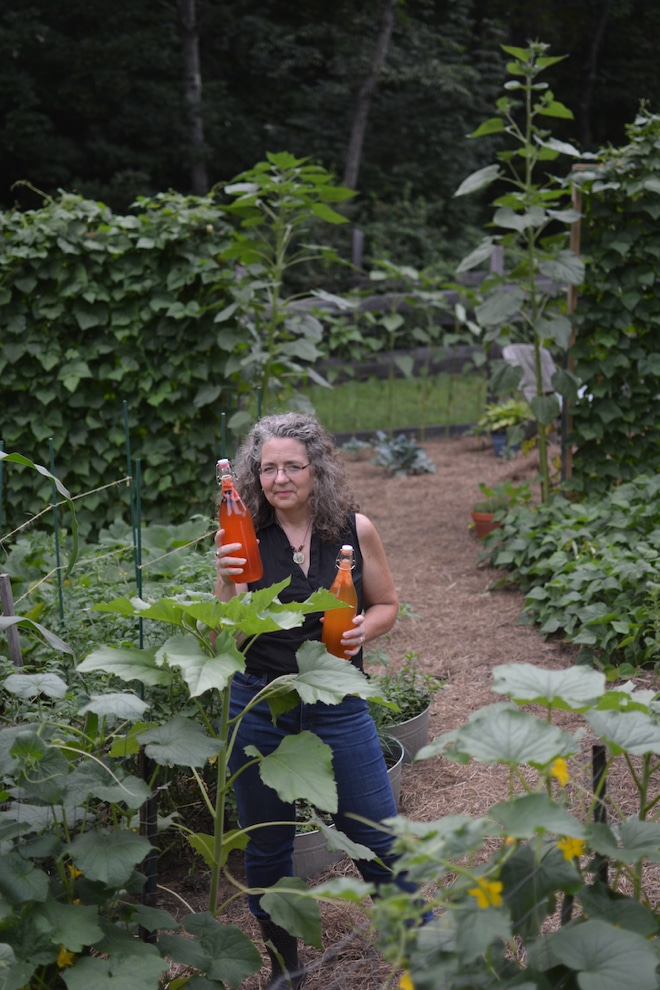
What I’m planting to grow ingredients for soda
I immediately started a new list of seeds to order. Here’s my list of seeds and plants I’ve ordered to make my Soda Garden…
- lavender,
- anise, and
- ginger.
I’ve grown lavender many years, so that is a no brainer to me. But the other two are new to me.
Officially I won’t be adding anise seeds directly to my soda, but making an anise extract. Making extracts is something I am familiar with, so I knew that would be easy when the time comes. (See my mint extract recipe here. It’s the same idea.)
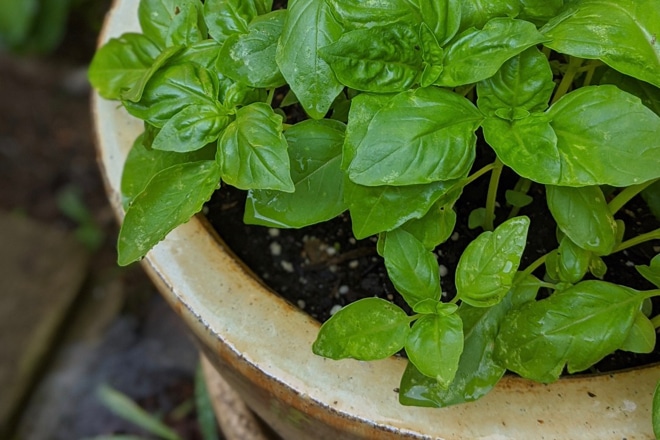
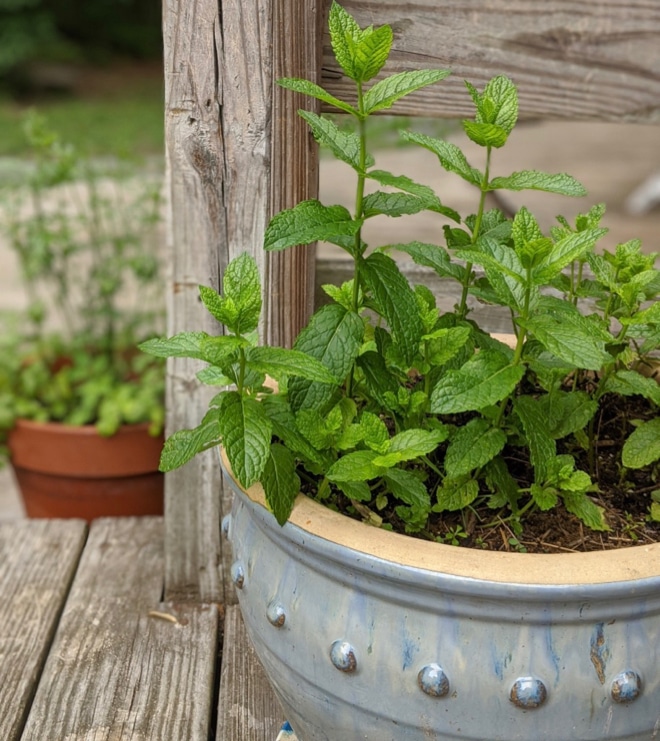
A garden of herbs for tea & other drinks
I got pretty excited thinking about this new garden (up until now I’ve grown a lot of my herbs in pots or in random sections of my vegetable gardens) and I realized, as I added more great new-to-me plants to my list, it’s going to be a garden to feed my passion for healthy drinks. But a “Garden for Making Healthy Drinks” doesn’t really have a nice ring to it… so the verdict is still out what I’m going to call this garden.
Reply and tell me your ideas! Every great garden needs a name.
In the end, after I cleaned up all my garden seed packets, put the cat back in the barn, and stocked the fire a few times, I have a finalized list of all the seeds and plants I’ve ordered for this unnamed Garden of Healthy Drinks. All but one are from an amazing seed company. I love this company so much I asked them if they’d give my readers a discount.
Use the exclusive code you’ll find when you click over and save on any seed or plant orders from Territorial Seed Company.
The 16 ingredients in my garden (& their benefits)
- Lavender (Lavandula x intermedia) Lavender tea is a soothing and calming drink that gives a nice floral note to a blend that includes other herbs (by itself it tastes kinda soapy if you ask me) and it’s an important ingredient in my DIY Coke recipe. Read about the benefits of lavender tea here and listen to this podcast episode I recorded with a lavender farmer and this episode where the lavender farmer answers all your questions.
- Blue hyssop (Agastache rugosa ) Also called “Korean mint,” this gem, is in the mint and basil family. The leaves offer a smooth, sweet licorice taste to your tea blends. Read about the benefits of blue hyssop here.
- Ginger… You can plant a piece of plain old ginger from the grocery store and grow lots more, so I plan on trying this. I know it needs warmth, so I’ll plant a big piece of giner in a pot that I can easily bring inside during the winter months. When the root is ready to harvest, I’ll slice it and dehydrate it, dice it into chunks, and use it in my DIY Coke and my Ginger Peach tea blend.
- Tulsi basil (Ocimum tenuiflorum) This variety of basil has a very subtle minty flavor, but it’s so subtle that this pairs nicely in almost any and all tea blends, so I am often tossing some tulsi basil in my steeper. And why not? Take a look at the benefits of tulsi basil!
- Lemon balm (Melissa officinalis) In the mint family, lemon balm makes a delicious tea. And all the benefits of lemon balm will blow you away.
- Ginger mint (Mentha x gracilis) This variety of mint is not only delicious in teas but it’s so pretty and aromatic in the garden too, with pinkish stems and golden-streaked, tooth-edged leaves. Read more about the benefits of ginger mint tea here.
- Mojito mint (Mentha x villosa ) While it’s named for the alcoholic drink that it’s perfect for, I grow this particular variety of mint for flavoring my non-alcoholic kombucha. Strawberry Mojito Kombucha is one of my all-time favorites. And all varieties of mint pack a big punch of benefits–read here.
- Orange mint (Mentha citrata) This wonderfully citrus-y mint is my all-time favorite mint to sip as a warm cup of tea. Just steep the leaves in hot water and mmmmm. If I have some dried cherries on hand, I’ll steep a few of those in with the leaves and wow… so good.
- Chocolate mint (Mentha × piperita f. citrata) This mint variety is my favorite for making mint chocolate smoothies or mint chocolate chip ice cream.
- A yerba mate plant (Ilex paraguariensis) Tea is made from the dried leaves and stems of the plant that offer numerous benefits. But I’m new to growing this and hope it overwinters inside–here in New England–well.
- Lemongrass (Cymbopogon citratus) Lemongrass tea has a refreshingly sweet citrus flavor (it’s pretty popular with herbal tea enthusiasts), made from both the leaves and stalks of the lemongrass plant. Read more about the benefits of lemongrass here.
- Echinacea (Echinachea purpurea ) These beautiful flowers are not the only part of this medicinal plant that makes a wonderful addition to tea. The stems and leaves do as well. Read the benefits of echinacea here.
- Calendula (Calendula officinalis) I love this particular color of calendula (although the common one you’re used to is pretty too). While I’ll just be using the flowers for teas, the leaves are great for making an extract. Read about the benefits of calendula here.
- Turmeric (Curcuma longa ) The spicy, earthy flavor of turmeric pairs nicely with many ginger, green, black, and chai tea blends. Read here the benefits of turmeric in your tea if you also add a little pepper.
- Chicory (Cichorium intybus) Chicory makes me happy. I’ve been growing it for 4 years and love the fact that I can (kinda) grow my own coffee. You see I harvest the roots, dehydrate and roast them, then grind them up to steep in hot water as a delicious tea that tastes like coffee (recipe here). Read about the numerous benefits of chicory here.
- Ashwagandha (Withania somnifera) This plant is another one I’m familiar with. I experimented with growing 2 plants last year and I was so pleased with the big roots that I harvested and roasted to make a medicinal powder that I add to my healthy hot chocolate mix. Read about the benefits of ashwagandha here.
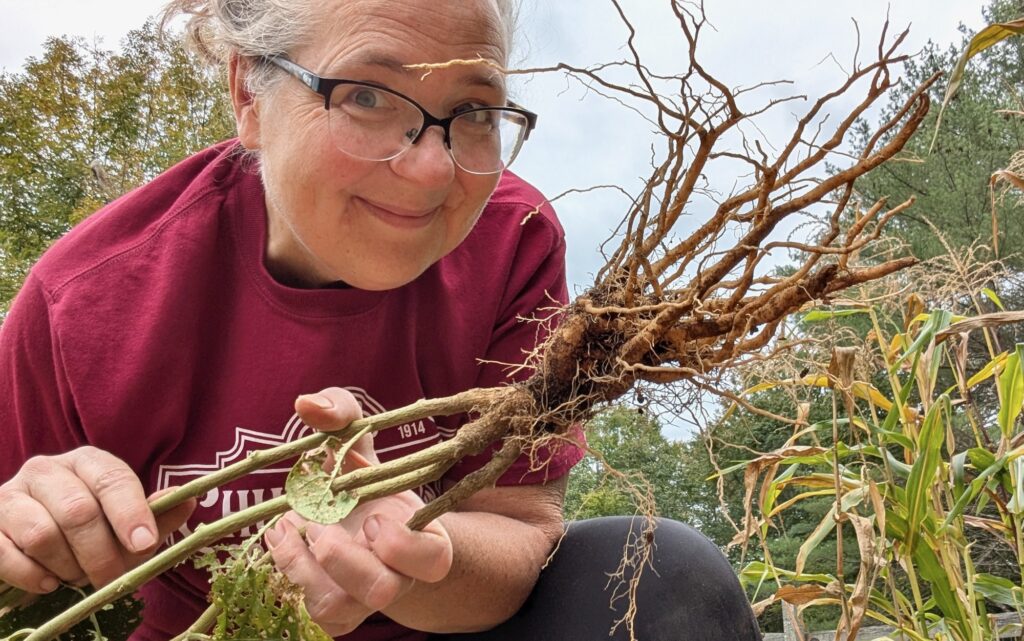
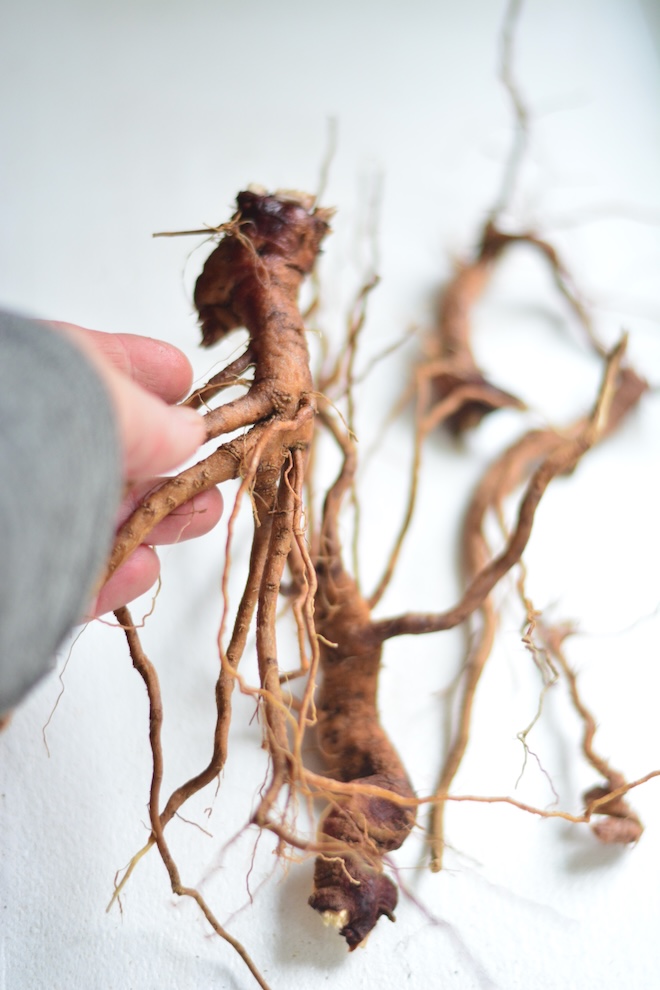
Stay tuned. I’ll be updating you on my garden and all the yummy things I’ll be making from its harvest.
Follow on instagram and you can join me in the garden often, every summer.
Listen in to my updates on this year’s garden–my failures and what I’d do differently–on this episode of the Simple Doesn’t Mean Easy podcast: Crazy Things I Grew This Summer.
Gardening tools you might want if you’re growing herbs for tea
More like Growing Herbs for Tea & Medicinal Drinks
Sunflowers in the garden–a secret you need to know
My chat with the lavender farmer (listen to the podcast episode)
A lavender farmer explains why you need this herb in your life (watch on youtube)
5 best all-natural drinks when you’re sick
How to Make Tea Blends that you’ll love
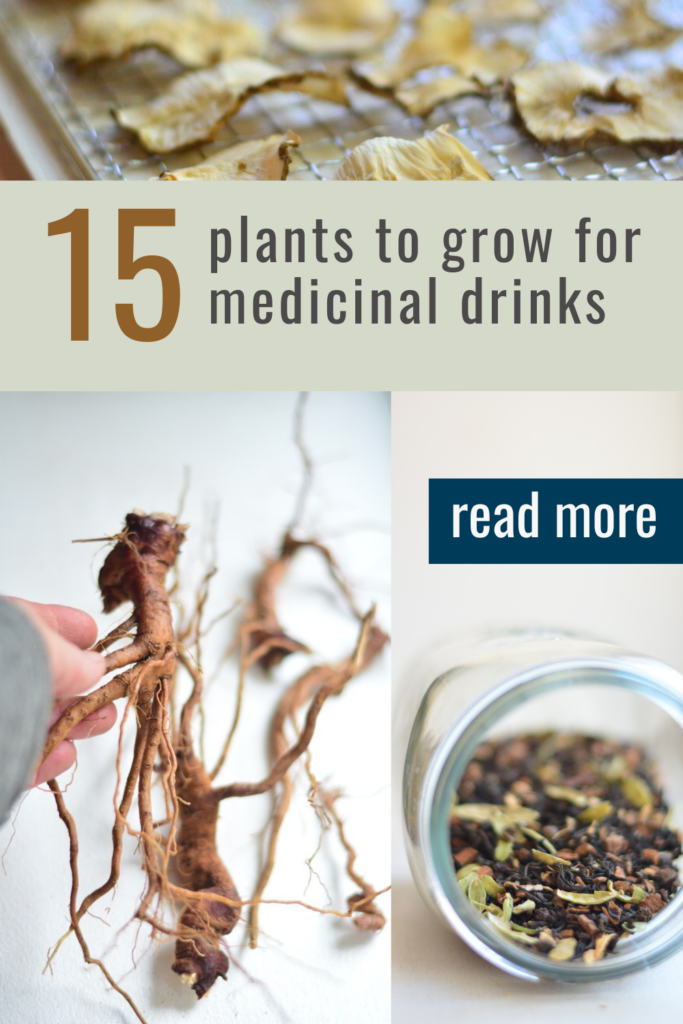

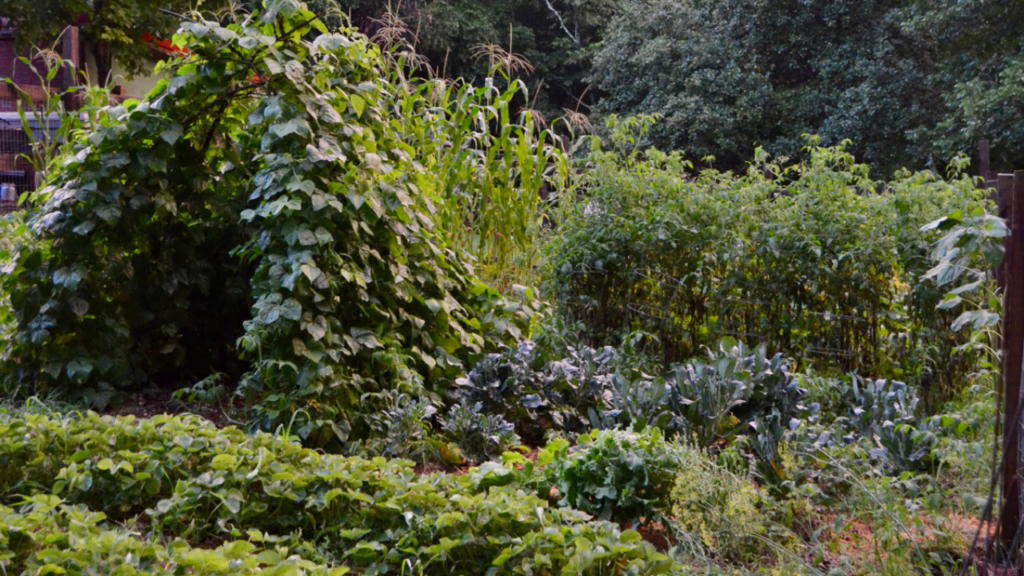

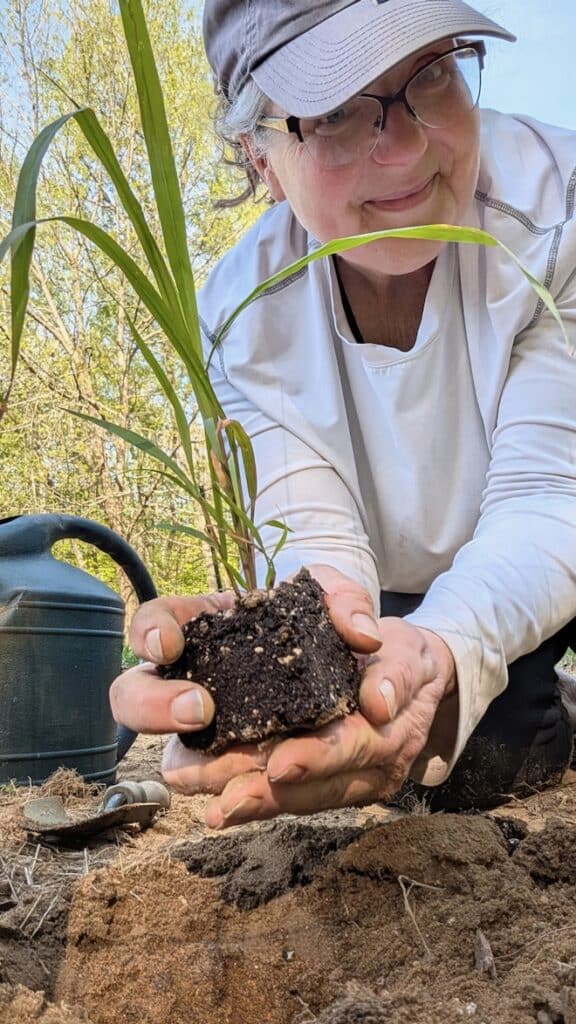
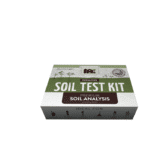


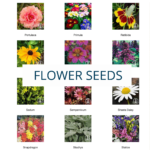
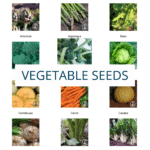
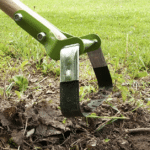
I’m growing Raspberries, for my husband. But the bonus is that the leaves are good for tea. Yea!